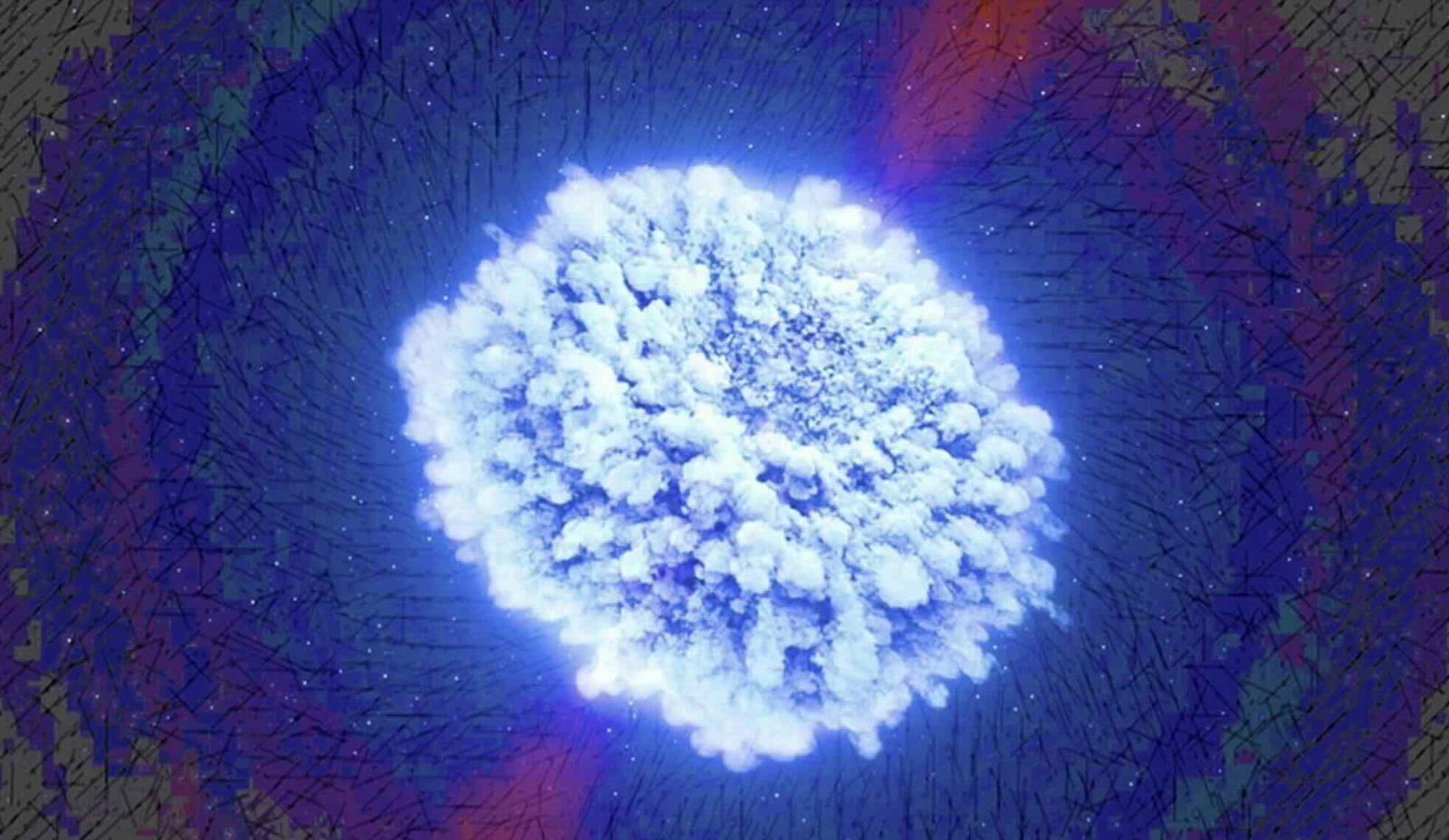Dutch astrophysicists have observed the collision of two neutron stars, capturing unprecedented data that offers new insights into the formation of black holes.
The team, based at the Niels Bohr Institute at the University of Copenhagen, documented the birth of the smallest black hole ever recorded through their observations. Their findings, published in Astronomy and Astrophysics, illuminate the immense cosmic forces at play and how such events have shaped the universe and the creation of atoms.
The Brilliance of a Kilonova
A kilonova, first detected in 2017, occurs when two neutron stars—or a neutron star and a black hole—collide. As they spiral together, they generate powerful gravitational waves. The impact results in intense gamma-ray bursts and electromagnetic radiation.
The fiery collision observed by the Niels Bohr team was extraordinary, and produced a celestial fireball moving at the speed of light, glowing as brightly as hundreds of millions of stars for several days. However, piecing together a comprehensive view of this event required a series of observations from astrophyscial observatories around the world.
Data from observatories in Australia and South Africa, along with the Hubble Space Telescope, provided data that offered a more complete understanding of the event. “This wealth of data… is more significant than the sum of its parts,” noted team member Albert Sneppen, PhD.
The collision heated remnant matter to billions of degrees—about a thousand times hotter than the sun’s core, similar to the temperatures of the universe one second after the Big Bang. Under these extreme conditions, electrons separate from atomic nuclei, forming an ionized plasma that persists until the matter cools.
The Cooling Early Universe
While the cooling process for the recent event happened over days, the early universe took 370,000 years to cool enough for atoms to form. At that stage, matter coalesced, allowing light to travel freely. This light, known as the “cosmic background radiation,” still reaches Earth from the farthest corners of the universe.
The new study has observed similar atomic formations, detecting heavy elements like strontium and yttrium. While these elements are relatively easy to identify, the potential remains for more hidden elements yet to be detected.
“The matter expands so fast and gains in size so rapidly, to the extent where it takes hours for the light to travel across the explosion,” co-author and assistant professor Kasper Heintz explained. “This is why, just by observing the remote end of the fireball, we can see further back in the history of the blast.”
The Smallest Black Hole Ever Seen
By analyzing snapshots of the expanding fireball, researchers stretched out key moments, providing more detailed observations of the event that produced the smallest black hole known to have been observed by astronophysicists to date.
“We can now see the moment where atomic nuclei and electrons are uniting in the afterglow,” said Rasmus Damgaard, a PhD student at the Cosmic DAWN Center.
“For the first time we see the creation of atoms, we can measure the temperature of the matter and see the micro physics in this remote explosion,” Damgaard said. “It is like admiring three cosmic background radiation surrounding us from all sides, but here, we get to see everything from the outside.”
“We see before, during and after the moment of birth of the atoms.”
The paper “Rapid Kilonova Evolution: Recombination and Reverberation Effects” appeared on August 7, 2024 in Astronomy and Astrophysics.
Ryan Whalen covers science and technology for The Debrief. He holds a BA in History and a Master of Library and Information Science with a certificate in Data Science. He can be contacted at ryan@thedebrief.org, and follow him on Twitter @mdntwvlf.

